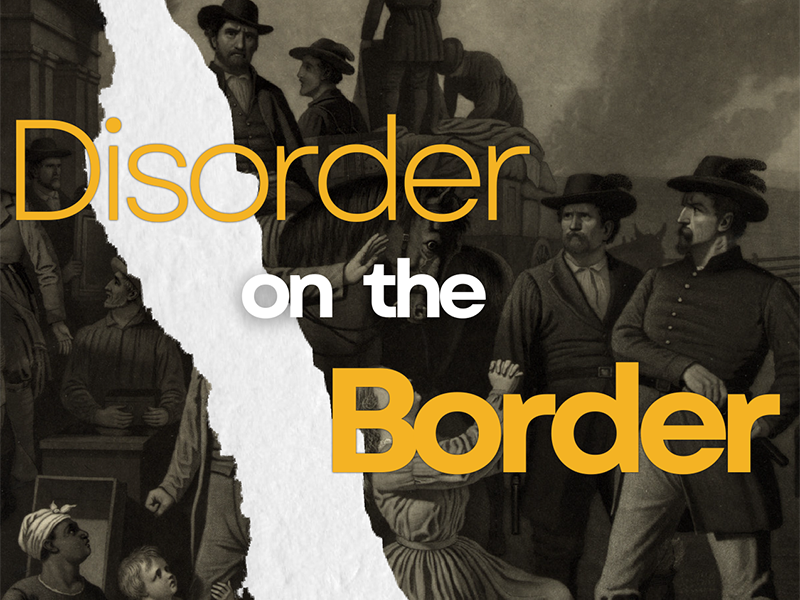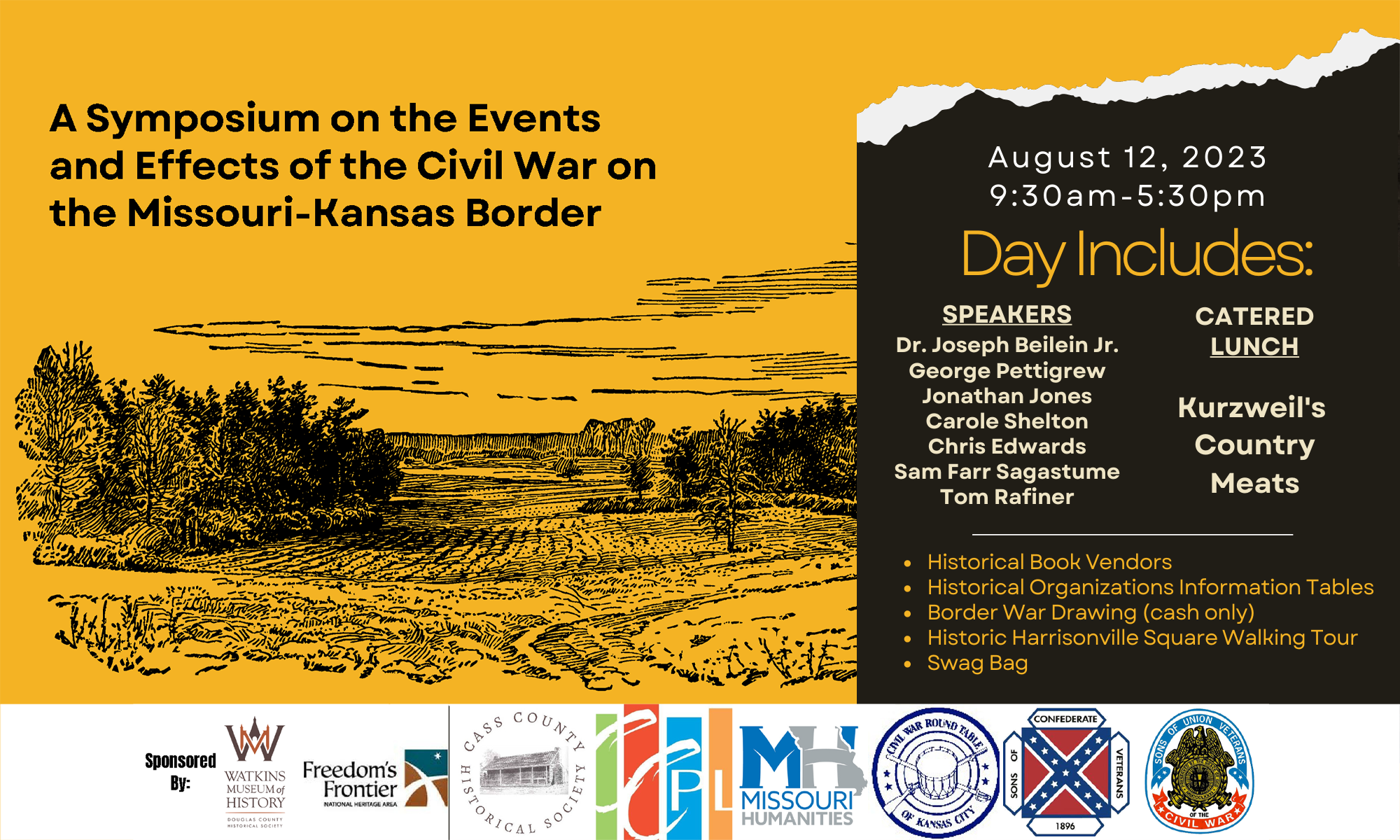
Disorder on the Border is back! On August 12, a broad-based group of historians will again gather to discuss the conflict and casualties of one of the most divisive periods of American history at the Harrisonville Community Center. Sessions presented by noted historians from both sides of the Missouri-Kansas border will examine topics such as women on the border, slavery in Missouri, Bleeding Kansas, the occupation in Civil War Missouri, guerrillas as combatants, and Order No. 11. Disorder on the Border was previously held in Lawrence, Kansas in 2019.
Advance registration is required. Tickets for the program are $35 and include access to all sessions, a catered lunch, access to historical book vendors, historical organizations’ information tables, a Border War drawing, and a walking tour of the Historic Harrisonville Square. Ticket holders will also receive a swag bag. Ticket sales end August 7 August 10.
Disorder on the Border is a combined presentation of the the Watkins Museum of History, Freedom’s Frontier National Heritage Area, the Cass County Historical Society, the Cass County Public Library, Missouri Humanities, the Civil War Round Table of Kansas City, the Songs of Confederate Veterans, and the Sons of Union Veterans of the Civil War. Its sponsors encourage participants to gain a better understanding of the events of the late 1850s and early 1860s that shaped our region and influenced national history.
Tickets can be purchased online at freedomsfrontier.org/disorder-on-the-border-2023.

Freedom’s Frontier National Heritage Area (FFNHA) builds awareness of struggles for freedom in western Missouri and eastern Kansas. Established by Congress in 2006, FFNHA covers a unique physical and cultural landscape across 41 counties and 31,000 square miles. It promotes three diverse, interwoven, and nationally significant stories: frontier settlement, the Missouri-Kansas Border War and Civil War, and enduring civil rights disputes. FFNHA inspires respect for multiple perspectives and empowers area residents to preserve and share these stories, achieving its goals through interpretation, preservation, conservation, and education for all residents and visitors. It is one of 62 federally recognized National Heritage Areas across the United States.